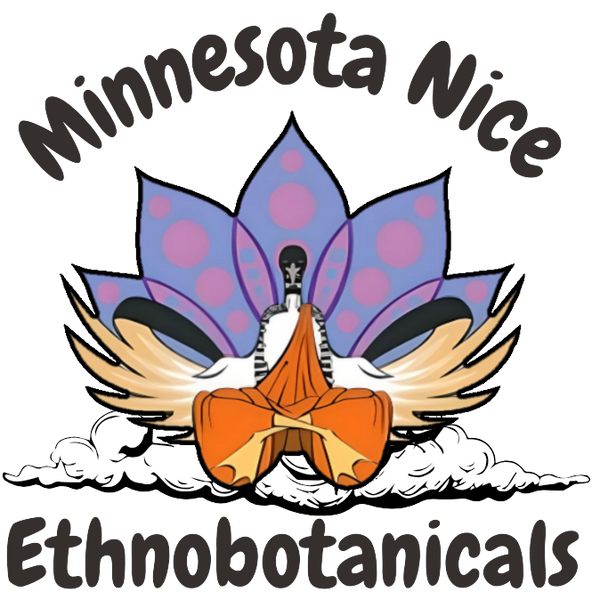Holiday Gift Guide: Ethnobotanical Bundles for Every Explorer - up to 22% Off!
This holiday season we're offering six carefully curated bundles to inspire exploration, wellness, and insight. Each kit is designed with specific themes in mind and includes complementary products that work together for maximum benefit.
Important: To qualify for the discounted prices, you must purchase all products in the bundle. Some quantities are limited, so act fast!
If you can’t find the bundle deals through the links provided, you can also find them listed under the product descriptions on the respective product pages of the included items.
1. Visionary Kit 😵💫🍄🌸 – 15% Off
What’s Inside?
- Hawaiian Baby Woodrose Seeds (Argyreia nervosa)
- The Holographic Universe by Michael Talbot
Why We Chose These Items:
This kit pairs Hawaiian Baby Woodrose Seeds, known for their LSA content (a precursor to LSD) and use in traditional spiritual practices, with The Holographic Universe, a groundbreaking book that explores the nature of reality through quantum physics and mysticism. Together, they create a package perfect for those seeking intellectual and experiential exploration.
Who’s It For?
Ideal for seekers of deep insight and spiritual connection, or anyone curious about the mysteries of the universe.
2. Gummy Fan Club! 🥳 - 15% Off!
What’s Inside?
- Amanita Muscaria Gummies
- Blue Lotus Gummies
- Shilajit Gummies
Why We Chose These Items:
This bundle offers three of our most popular gummies, providing powerful plant-based benefits:
- Amanita Muscaria Gummies: Full Spectrum Amanita Experience in a convenient gummy.
- Blue Lotus Gummies: Contains apomorphine and nuciferine to support emotional balance and relaxation.
- Shilajit Gummies: Packed with fulvic acid and trace minerals for energy and vitality.
Who’s It For?
Great for anyone who wants a convenient, flavorful way to experience the benefits of these powerful botanicals.
3. Nootropic Kit 🤓 - 15% Off!
What’s Inside?
- Baicalin Isolate
- Lion’s Mane Capsules
- Amanita Muscaria Capsules
Why We Chose These Items:
Boost brain health and cognitive performance with this powerful trio:
- Baicalin Isolate: A flavonoid with neuroprotective properties to support focus and memory.
- Lion’s Mane Capsules: Contain hericenones and erinacines, which stimulate Nerve Growth Factor (NGF).
- Amanita Muscaria Capsules: Offers muscimol and Ibotenic Acid for a calming effect that aids focus and introspection.
Who’s It For?
Ideal for students, professionals, or anyone looking to stay sharp and productive.
4. Dreamer's Kit 😴 - 17% Off!
What’s Inside?
- Silene Capensis (African Dream Root)
- Blue Lotus Extract Capsules
- Amanita Muscaria Caps (30 grams)
Why We Chose These Items:
Designed to enhance dream clarity and depth, this kit brings together:
- Silene Capensis: Rich in saponins, this African herb is used traditionally to induce vivid, lucid dreams.
- Blue Lotus Extract Capsules: Provide nuciferine for relaxation and dream enhancement.
- Amanita Muscaria Caps: High in muscimol, these caps can promote vivid, introspective dream states.
Who’s It For?
Perfect for those exploring dreamwork or lucid dreaming practices.
5. Pain Relief Bundle 😌 - 18% Off!
What’s Inside?
- Akuamma Extract
- Wild Lettuce Extract
- Amanita Muscaria Topical
Why We Chose These Items:
This kit provides effective, natural solutions for pain relief:
- Akuamma Extract: Contains akuammine, a kappa-opioid receptor agonist that reduces pain and inflammation.
- Wild Lettuce Extract: Rich in lactucopicrin, a natural analgesic and mild sedative.
- Amanita Muscaria Topical: Combines muscimol for localized pain relief and soothing properties.
Who’s It For?
Perfect for those managing chronic pain, muscle soreness, or joint discomfort.
6. Amanita Lovers Kit 🍄❤️ - 22% Off!
What’s Inside?
- Amanita Muscaria Caps
- Amanita Muscaria Gummies
- Muscimol Gummies
- Amanita Regalis Caps
- Amanita Pantherina Powder
Why We Chose These Items:
This kit celebrates the versatility and power of Amanita species, known for their unique psychoactive compound, muscimol. It includes:
- Amanita Muscaria and Amanita Pantherina Caps: High-quality caps for traditional and introspective use.
- Amanita Regalis Caps: Known for their balanced and calming effects.
- Amanita and Muscimol Gummies: Convenient, bioavailable options for those looking to explore muscimol’s benefits.
Who’s It For?
Perfect for Amanita enthusiasts or those looking to explore the diversity of Amanita-based products.
Shop Now and Save
Each bundle is specially priced for the holidays, offering significant discounts when all items are purchased together:
- 15% Off: Visionary Kit, Gummy Fan Club Bundle, and Nootropics Kit.
- 17% Off: Dreamer’s Kit.
- 18% Off: Pain Relief Bundle.
- 22% Off: Amanita Lovers Kit.
Can’t find the bundle link? Visit the product pages for more details.
Hurry—some quantities are limited!







